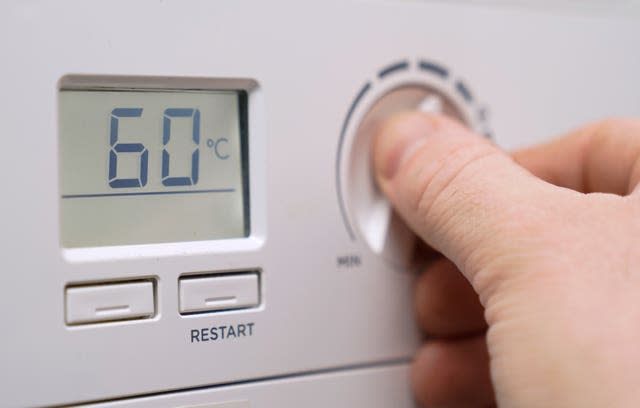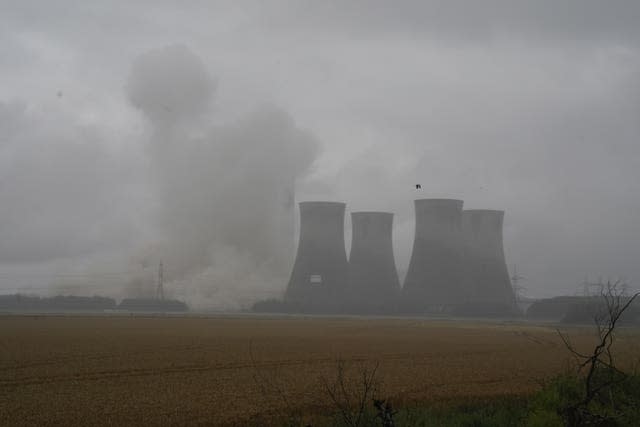Russian fossil fuel exports will fall as world turns to cleaner energy – IEA
Russian fossil fuel exports will never return to 2021 levels in the wake of the invasion of Ukraine, as the world turns to cleaner energy, experts have said.
The International Energy Agency said the crisis provoked by the war could be a “historic turning point towards a cleaner and more secure energy system” as governments including the US, Europe, China and Japan respond with a shift to clean power and technology such as electric cars.
The IEA’s world energy outlook for 2022 said that, for the first time, its scenario based on current policies by governments worldwide sees global demand for every fossil fuel peaking or plateauing.
As a result, global emissions are set to peak in 2025, before falling slowly.
But that is still far from enough to avoid severe climate change impacts, with temperatures set to hit a dangerous 2.5C rise by the end of the century, the report said.
Stronger policies would be needed to drive the huge increase in energy investment required to reduce future volatility and drive deployment of clean energy, the IEA warned.
The energy crisis triggered by Russia’s invasion of Ukraine has sent shock waves through natural gas, coal and electricity as well as oil markets, stoked inflation and created a looming risk of recession and food insecurity.
The IEA’s analysis finds scant evidence for claims that climate policies and commitments to cut emissions to net zero contributed to energy prices, warning the world is “struggling with too little clean energy, not too much”.
In the worst-hit regions, higher shares of renewables correlate with lower electricity prices and more efficient homes and electric heating are providing a buffer for some consumers, though not enough, the IEA said.

The heaviest burden is falling on poorer households who spend a larger share of income on energy.
But Russia’s invasion of Ukraine is leading to an energy market “rupture” with Europe at a speed that few imagined possible, the report said.
Russian fossil fuel exports never return to levels seen in 2021 in any of the scenarios set out by the IEA for future energy markets, with its share of internationally traded energy falling from nearly 20% in 2021 to 13% in 2030 under the current policies scenario.
The current uptick in coal as a result of the energy crisis is temporary and the increase in renewables will be fast enough to outpace total electricity growth, driving down the contribution of fossil fuels for power.
This winter promises to be a tough time for Europe, and next winter could be even tougher, but in the longer term Russia’s actions mean the era of rapid growth in gas demand is drawing to a close, the IEA said.

Coal use will fall back within the next few years, natural gas reaches a plateau by the end of the decade and rising sales of electric cars mean oil will plateau in the mid-2030s before ebbing slightly to mid-century under the scenario based on prevailing policy settings.
IEA executive director Fatih Birol said: “Energy markets and policies have changed as a result of Russia’s invasion of Ukraine, not just for the time being, but for decades to come.
“Even with today’s policy settings, the energy world is shifting dramatically before our eyes.
“Government responses around the world promise to make this a historic and definitive turning point towards a cleaner, more affordable and more secure energy system.”
If all the climate pledges – beyond existing policies – that have been announced by countries were delivered, temperature rises could be limited to around 1.7C in 2100.
But the report warned it was easier to make pledges than implement them and there would still be “considerably further to go” to achieve the 1.5C warming limit countries have agreed to in order to avoid the most dangerous climate change.
Clean energy investment rises above two trillion US dollars by 2030 in scenarios based on current policies but that needs to be more than four trillion US dollars to drive emissions down to net zero by mid-century and meet the 1.5C goal.
If the current growth rates for deploying solar panels, wind, electric vehicles and batteries are maintained, it could lead to a much faster transformation than currently predicted, but would need policies to support them around the world.
Dr Birol said: “The environmental case for clean energy needed no reinforcement, but the economic arguments in favour of cost-competitive and affordable clean technologies are now stronger – and so too is the energy security case.
“Today’s alignment of economic, climate and security priorities has already started to move the dial towards a better outcome for the world’s people and for the planet.”
And he warned: “The journey to a more secure and sustainable energy system may not be a smooth one. But today’s crisis makes it crystal clear why we need to press ahead.”
